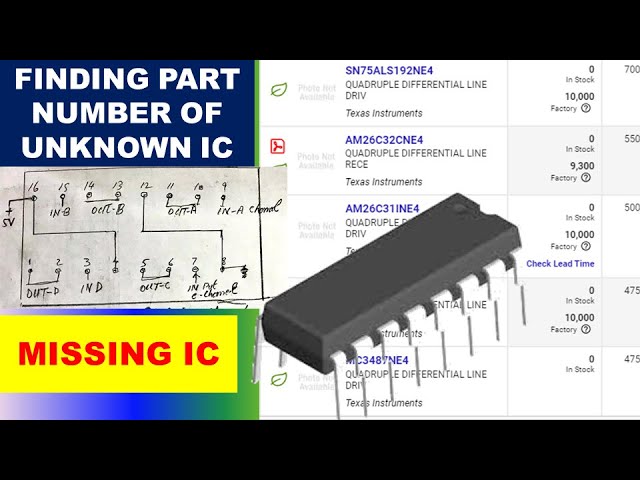
Have you ever come across a mysterious Integrated Circuit (IC) and wondered what it is and how you can identify it? Well, you’re not alone! Many electronics enthusiasts, hobbyists, and professionals often face the challenge of identifying unknown ICs. In this article, we will discuss some useful methods and techniques that can help you identify an unknown IC with ease.
1. Check the markings
The first step in identifying an unknown IC is to carefully examine the markings on the package. Most ICs have some form of identification like a logo, part number, or manufacturer name printed on them. These markings can provide valuable clues that can help you narrow down your search.
Make sure to use a magnifying glass or a microscope to get a better view of the markings. Sometimes, the markings can be small and difficult to read with the naked eye.
2. Use online resources
If you couldn’t identify the IC based on the markings, don’t worry! There are several online resources that can help you in your quest. Websites like Datasheet Archive, Digi-Key, and Octopart offer comprehensive databases of IC part numbers and manufacturers.
You can enter the markings or any other identifiable information into the search bar on these websites to get relevant information about the IC. You may be able to find datasheets, application notes, and even cross-references to similar ICs.
3. Use a multimeter
If the markings and online resources didn’t yield any results, you can try using a multimeter to identify the pins and their functions. With a multimeter set to the diode check mode, you can test the continuity between the pins to determine which ones are connected.
By carefully tracing the connections between the pins, you can get a better understanding of the IC’s internal layout and possibly identify its function. This method may require some trial and error, but it can be a useful tool in identifying unknown ICs.
4. Consult with experts
If all else fails, don’t hesitate to reach out to fellow electronics enthusiasts, forums, or online communities for help. Many experienced individuals are happy to offer their expertise and knowledge to help you identify an unknown IC.
You can post clear pictures of the IC, its markings, and any other relevant information in these forums or communities. Chances are, someone has encountered a similar IC before and can provide valuable insights that can help you in your identification process.
5. Reverse engineering
If you’re still unable to identify the IC using the above methods, you can consider reverse engineering the IC. This involves creating a schematic diagram of the IC based on its connections and functionality.
Reverse engineering can be a time-consuming and challenging process, but it can be a rewarding experience that can deepen your understanding of electronics and IC design. You may need specialized tools like an oscilloscope, logic analyzer, or dedicated IC decapsulation equipment for this method.
Conclusion
Identifying an unknown IC can be a daunting task, but with the right tools and techniques, it is definitely possible. By following the steps outlined in this article and being persistent in your efforts, you can successfully identify an unknown IC and unlock its mysteries.
Remember to always approach the identification process methodically and systematically. Don’t hesitate to seek help from others if you’re stuck. Happy hunting!
Was this helpful?
0 / 0